For Efficiency’s Sake
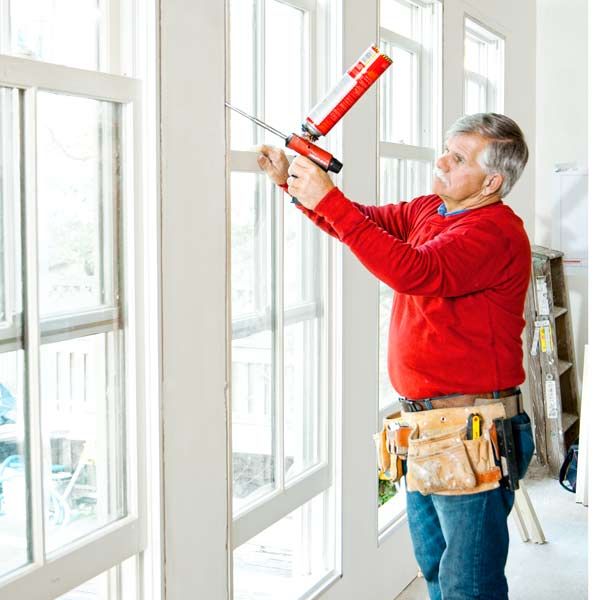
John Stone and Sally Peterson knew they had a big renovation on their hands when they bought a three-story 1887 Queen Anne in Cambridge, Massachusetts. It needed not only a new layout to accommodate their family of four but also, not surprisingly, overhauls of its drafty windows, underinsulated walls, and century-old boiler-and-radiator heating system. With a project of this scope, just bringing the house up to modern building codes would have provided dramatic improvements in energy usage. But as long as the walls were being opened up, the homeowners opted to invest in a number of efficiency upgrades—some simple, some more complex. “Making our house energy efficient is going to minimize our monthly bills and keep us more comfortable in winter and summer,” says John. Here’s a brief overview of the systems they’ve chosen to achieve these goals.
Sealing The Envelope
As with any home built before the days of insulation, house wrap, and double-pane windows, there’d be little point in installing high-efficiency HVAC equipment without first buttoning up the leaky exterior shell. TOH TV general contractor Tom Silva applied spray foam insulation, which yields slightly-better-than-code R-43 in the roof and R-21 in the walls. The foam, which requires professional installation, is about two to three times the cost of fiberglass batts but offers two to three times the effectiveness. And because it fills every crack and void, creates a vapor barrier, and won’t settle over time, it eliminates drafts, too.
But a wall is only as airtight as its windows. Fixing the existing ones proved too expensive, so Tom replaced the rattly old sashes with high-performance wood units by Marvin that have simulated divided lights, insulating argon gas between the panes, and an invisible metallic low-emissivity, or low-e, coating that blocks heat loss. Windows like these typically start at $600 to $700 each but can reduce energy loss by 30 to 50 percent.
Shown: TOH general contractor Tom Silva uses canned spray foam to seal air gaps around new Marvin windows. To accommodate the local historic district’s request that the windows look authentic, he ordered units with a putty detail on the outside—a flat, diagonal profile around each simulated light that mimics the look of the glazier’s putty once used to hold panes of glass in place—instead of the usual quarter-round molding.
Added Comfort
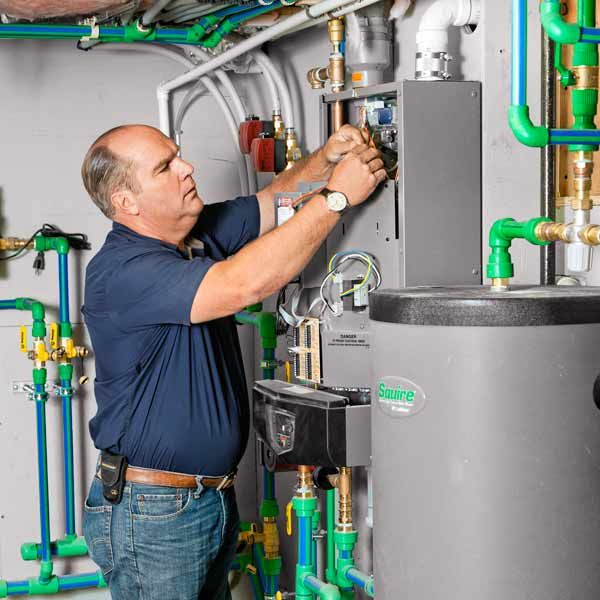
John and Susan also wanted to convert their unfinished basement into a family room and home office, so it needed insulation for comfort. Tom opted to install InSoFast insulation: 24-by-48-inch tongue-and-groove panels of polystyrene foam with embedded plastic studs 16 inches on center and precut channels on the back sides for snaking wires. Designed for basements, the system delivers both framing and insulation in one easy step—and greatly simplifies the wiring process, since an electrician can use a hole saw to make access ports in the panels, then glue the cutouts back in place with spray foam. Wallboard then goes directly over the whole assembly.
Tom, who’s given many houses similar envelope upgrades in his 30-plus years as a contractor, estimates that these measures will slash the house’s heating and cooling costs in half. Plus, the improvements allowed the HVAC system to be downsized in power, saving the couple a significant upfront investment.
Hybrid HVAC Equipment
Since they were adding central air-conditioning, John and Sally scrapped the old radiators and boiler, opting to let the new ducts carry both AC and heat. TOH plumbing and heating expert Richard Trethewey designed a unique and highly efficient forced-air heating system that uses hot water as the “fuel” to heat the air supply. The water is warmed in a Lochinvar condensing boiler, which captures and uses heat from its own exhaust system, making it about 96 percent efficient—better than any furnace. This heated water will travel through insulated PEX pipes to two air handlers in the house. There, the water warms the air that’s then channeled through 2-inch high-velocity mini ducts supplying heat to each room.
Shown: TOH plumbing and heating expert Richard Trethewey designed an innovative HVAC system: It uses a Lochinvar condensing boiler to efficiently heat water that acts as the “fuel” for warming up the house’s air and hot water.
Like a Thermos Bottle
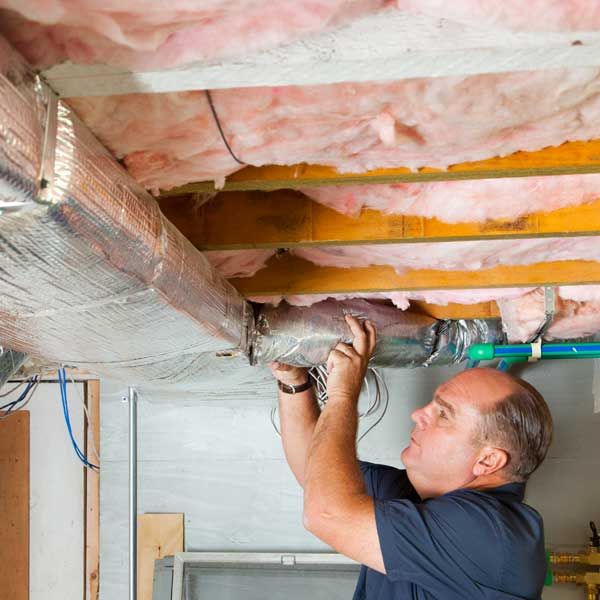
The boiler’s hot water will be put to use in other systems, too. Separate zones will feed supplemental radiant floor heat under the house’s entire first story and in the bathrooms. And to warm up hot water, an additional zone from the boiler will circulate through a heating coil in an indirect water tank. With this setup, the water tank itself doesn’t need a burner, and therefore it has no flue where heat can escape. “It acts like a giant thermos bottle, with very little standby heat loss,” says Richard.
Hybrid HVAC Equipment
Since they were adding central air-conditioning, John and Sally scrapped the old radiators and boiler, opting to let the new ducts carry both AC and heat. TOH plumbing and heating expert Richard Trethewey designed a unique and highly efficient forced-air heating system that uses hot water as the “fuel” to heat the air supply. The water is warmed in a Lochinvar condensing boiler, which captures and uses heat from its own exhaust system, making it about 96 percent efficient—better than any furnace. This heated water will travel through insulated PEX pipes to two air handlers in the house. There, the water warms the air that’s then channeled through 2-inch high-velocity mini ducts supplying heat to each room.
Shown: Richard Trethewey connects a mini duct to the main trunk line. These smaller ducts will be snaked through the house’s 24 wall framing to deliver heated (or cooled) air.
Weather-Responsive System
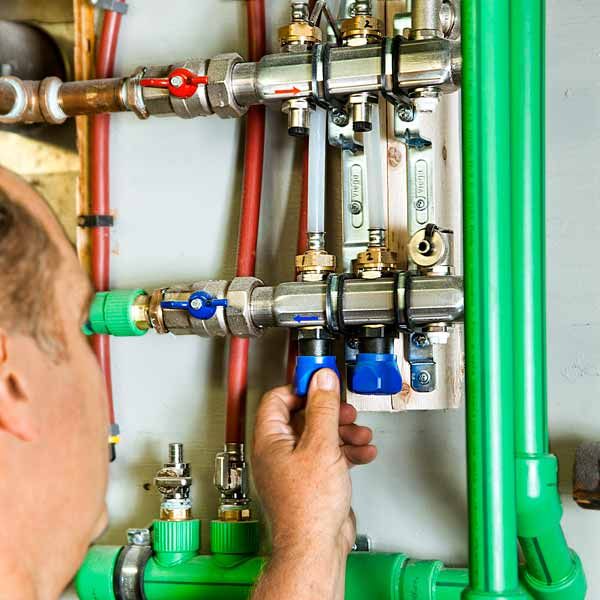
Best of all, the entire system is weather-responsive, equipped with sensors that monitor everything—from outdoor temps to the number of zones in the house calling for heat to the airflow demand on the ducts—and adjust both the water temperature and the fan speed accordingly. “On a cool fall day, the system will produce a slightly warm, gentle flow of air,” says Richard. But on a frigid day in January, the air in the ducts could be 20 degrees warmer and moving much faster. Combine that with the house’s super-insulated envelope—and the mini-duct system, which is designed to mix the house’s indoor air to avoid hot and cold spots—and John and Sally will get both efficiency and superior comfort. Richard estimates that the system he designed will operate about 20 to 25 percent more efficiently than a conventional heating system.
Shown: The condensing boiler also feeds the supplemental radiant floor heat on the first floor and in the bathrooms, which is designed to take the chill out of the air on days when using the full heating system would be overkill.
Smart Controls
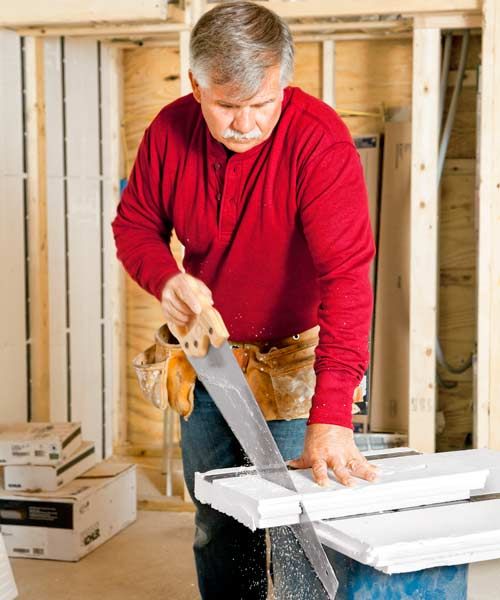
For his part, John’s favorite energy-saving devices to be installed in his house are the Nest thermostats—one for each story—which make programmable units look hopelessly wasteful and outdated. Using motion detectors and sophisticated algorithms, they learn the routines of John and Sally’s household and constantly program and reprogram themselves based on real-time data. Of course, each one can be set manually as well, either at the thermostat itself or with a smart-phone app. “So I’ll be able to dial back the temperature if we leave town for a few days and then raise it again on our way home to make sure the house is nice and toasty when we arrive,” John says. Because these units eliminate the human error that’s rampant with programmable thermostats, the manufacturer estimates they can reduce heating and cooling costs by as much as 20 percent.
With these improvements wrapping up, John and Sally look forward to seeing how low their energy bills will go. Consider this: During last year’s record-setting warm winter, the family lived in a house of similar age that was about 30 percent smaller than this one. “Yet with everything we’ve done to the new place, even if we get a typical, ice-cold New England winter,” John says, “I still anticipate spending less here.”
Shown: Tom cuts InSoFast framing and insulation panels for the basement. They’re typically adhered with construction adhesive directly to smooth concrete basement walls, then covered with wallboard.
